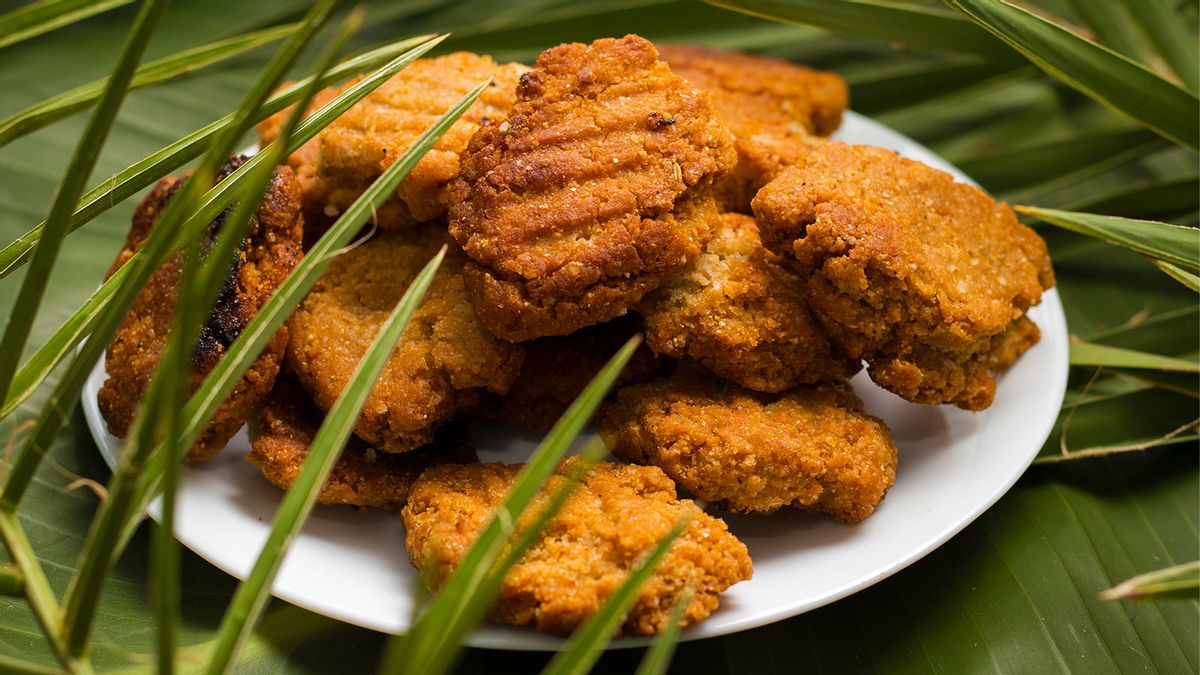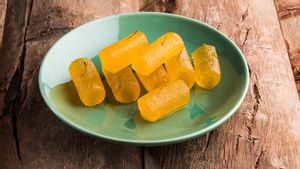Some recipes are timeless and connect with you in a way that goes beyond their ingredients and cooking process. Such is the story of the Bihari cookie ‘thekua’ that never got its share of the spotlight among popular Indian desserts like rasgulla, jalebi and gulab jamun. Sometimes I wonder if it has to do with the humble thekua’s plain-Jane appearance or because it was never really commercialised like its glamorous cousins, the balushahi, for instance.
Yet thekua has become Bihar’s brand ambassador thanks to its significance in Chatth Puja. Thekua's ‘country cousin’ appeal has perhaps proved to be a boon. It was saved from oblivion and commercialisation by halwai-sweetmeat shops and upmarket mithai brands. Either way, the homemade charm of thekua has remained intact. Its subtly sweet aroma tells tales of moms, grandmoms, chachis and mausis sweating it out to make this dessert that doesn’t need any preservatives and stays fresh for months in airtight jars.
Chhath Puja Connection
Though thekua is a round-the-year snack, it is primarily a revered prasad (offering to god) in the Chhath Puja that takes place precisely ten days after Diwali. For the uninitiated, Chhath Puja is an ancient Hindu festival native to Bihar, Jharkhand, eastern Uttar Pradesh, and the Madhesh of Nepal. The festival is dedicated to the sun God, Surya, and his wife Usha to thank them for bestowing the world with sunshine, health and happiness. Thekua is the Chhath special prasad. It is made with whole-wheat flour, jaggery or sugar, raisin, fennel seeds, coconut flakes and cardamom.
Notably, the thekua offered during puja is prepared at home by the family members, and neighbours and relatives pitch in. The ritual dictates that prasad-making be strictly inside the house. People in Bihar still get a mitti ka chulha (clay stove) at home in reverence to the ceremony and preserve the sanctity of prasad making.
I am not sure about its specific relevance to the festival, but for some reason that I cannot fathom, thekua deep-fried in a big cast-iron kadhai on the chulha turns out way more delicious than those made on modern stoves. The matriarch (the one who usually does the puja) distributes thekua to those who attend the three-day-long Chhath Puja. Those who couldn’t be present are sent a small consignment of thekua along with other puja offerings such as dry fruits and batasha—a dry, hard and sugar wafer.
Handmade appeal
Its rustic, unfinished look and wholesomeness differentiate thekua from other desserts. Have two thekua and you’re good to go for a couple of hours. Full of nutrition and energy, these Indian cookies travel long distances without the fear of spoilage, unlike other milk-based mithais, which are usually more delicate.
Thekua continues to be relevant in the modern, well-connected world. It tastes excellent with masala chai and green tea as a foil to its ruddy, grainy taste. You can make thekua more exciting and exotic by adding dates, orange peel or banana pulp. Here’s a recipe to try at home.
Thekua Recipe
Total cooking time: 1 hour 15 minutes; Makes 10 to 12 thekua
Ingredients
- 400 gm wholewheat flour
- 2 tablespoon chopped coconut
- 300 gm jaggery
- 5-6 ground green cardamom along with flakes
- 200 ml ghee/vegetable oil
- 10 raisins
- 3-4 chopped dates
- Pulp of 1 banana (optional)
Method
- Mix jaggery and cardamom with two cups of water to make a liquid solution. Mix 4 tablespoon ghee/oil to the jaggery and water solution.
- To this solution, add wholewheat flour, chopped coconut, raisins and dates to make a thick thekua dough (slightly thicker than what is made for chapatis).
- Take a lump of dough the size used to make chapatis and press it flat on your palm.
- Once flat, press the dough against a thekua mould (you’ll find it in stores that stock groceries from Bihar). Else, roughly shape an oblong thekua on your palm with your fingers.
- Deep-fry moulded thekua until they are rust-brown.
- Strain the ghee from thekua and let cool. Store in an airtight container.



